本文主要是介绍【SpringCloud】Eureka的简单使用,希望对大家解决编程问题提供一定的参考价值,需要的开发者们随着小编来一起学习吧!
本文使用的是jdk17,mysql8。
以下用两个服务做演示:
订单服务:提供订单ID,获取订单详细信息。
商品服务:提供商品ID,获取商品详细信息。
对于上篇http://t.csdnimg.cn/vcWpo 订单服务调用商品服务的时候,使用Spring提供的RestTemplate远程调用时,url部分是写死的,这是很不方便我们后续的操作。针对这个问题,这里使用Eureka来解决。
注册中心
注册中心是一种用于管理和协调微服务架构中各个服务实例的组件。它充当了服务注册和发现的中心,使得微服务能够相互发现和通信。
服务注册:每个微服务启动时,会向注册中心注册自己的网络地址、服务名称和其他相关信息。注册中心将这些信息保存起来,以便其他服务可以查询。
服务发现:当一个微服务需要与其他服务进行通信时,它可以向注册中心查询目标服务的信息,如网络地址、可用实例等。这样,服务之间就可以通过注册中心来建立连接,实现相互通信。
注册中心主要有三种角色:
服务提供者(Server):一次业务中,给其他微服务提供接口使用。
服务消费者(Client): 一次业务中,调用其他微服务的接口。
服务注册中心(Registry): 用来保存服务提供者的信息,并且当服务提供者发生变化时,它也同步更新。服务与注册中心使用一定的通信机制,如果服务与注册中心长时间没有通信,那么注册中心就会注销服务。
常见的注册中心:
ZooKeeper:ZooKeeper是一种开源的分布式协调服务,在微服务架构中常被用作注册中心。它具有高可用、一致性和可靠性等特点。(CP保证一致性)节点分为Leader、Follower和Observer,当Leader出现故障时,需要选举出Leader,此时服务不可用。
Eureka:Eureka是Netflix开源的注册中心,具有简单易用、高可用、自我保护等特点,常被用于构建基于Spring Cloud的微服务架构。(AP保证高可用)每个节点都是均等的。
Nacos:Nacos是阿里巴巴开源的一款服务发现和配置管理平台,也可以作为微服务架构中的注册中心。它提供了服务注册、服务发现、动态配置管理和服务治理等功能,对于构建和管理云原生应用非常有用。(CP或AP,默认AP)
CAP理论
CAP理论由下面三部分构成:
一致性(Consistency):多个节点访问数据时,获得的数据都是相同的数据。如果无法保证数据是相同的,就不返回任何数据。
可用性(Availability):每个请求都有响应。可能某个节点返回的结果不对,但是也要返回。
分区容错性(Partition Tolerance):网络分区运行,但是依然可以对外提供服务。如果节点之间出现了故障,也能进行服务。
根据CAP定理,分布式系统只能满足其中两个属性,无法同时满足三个。这是因为在面对网络分区(节点之间无法相互通信)的情况下,系统必须在一致性和可用性之间进行权衡选择。而且在分布式系统中,分区容错性必须考虑,一旦发生错误,导致整个系统不能使用,这是不符合实际的。
于是就出现了:
- CP架构:保证了分布式系统对外提供的数据一致性。如果不一致,就不返回任何数据。
- AP架构:保证了分布式系统的可用性,返回的结果就算不对也要返回。

Eureka
Eureka是Netflix OSS套件中的服务注册和发现解决方案。Spring Cloud对Eureka进行了集成,并长期以来作为推荐的解决方案。尽管Eureka 2.0已经停止维护,并且在新的微服务架构设计中不再被推荐使用,但目前仍有许多公司的微服务系统在使用Eureka作为其注册中心。
组成
Eureka Server:作为服务中心的服务端,向微服务应用程序提供服务注册,发现,健康检查等。
Eureka Client:服务提供者,向服务端注册自己的信息(IP, 端口, 服务信息等),服务端会保存信息。
搭建Eureka Server
对于Eureka Server,应该创建成一个独立项目方便管理。这里为了方便,将在上一篇http://t.csdnimg.cn/PV6Xw 的基础上,把Eureka Server创建成子模块。
创建子模块
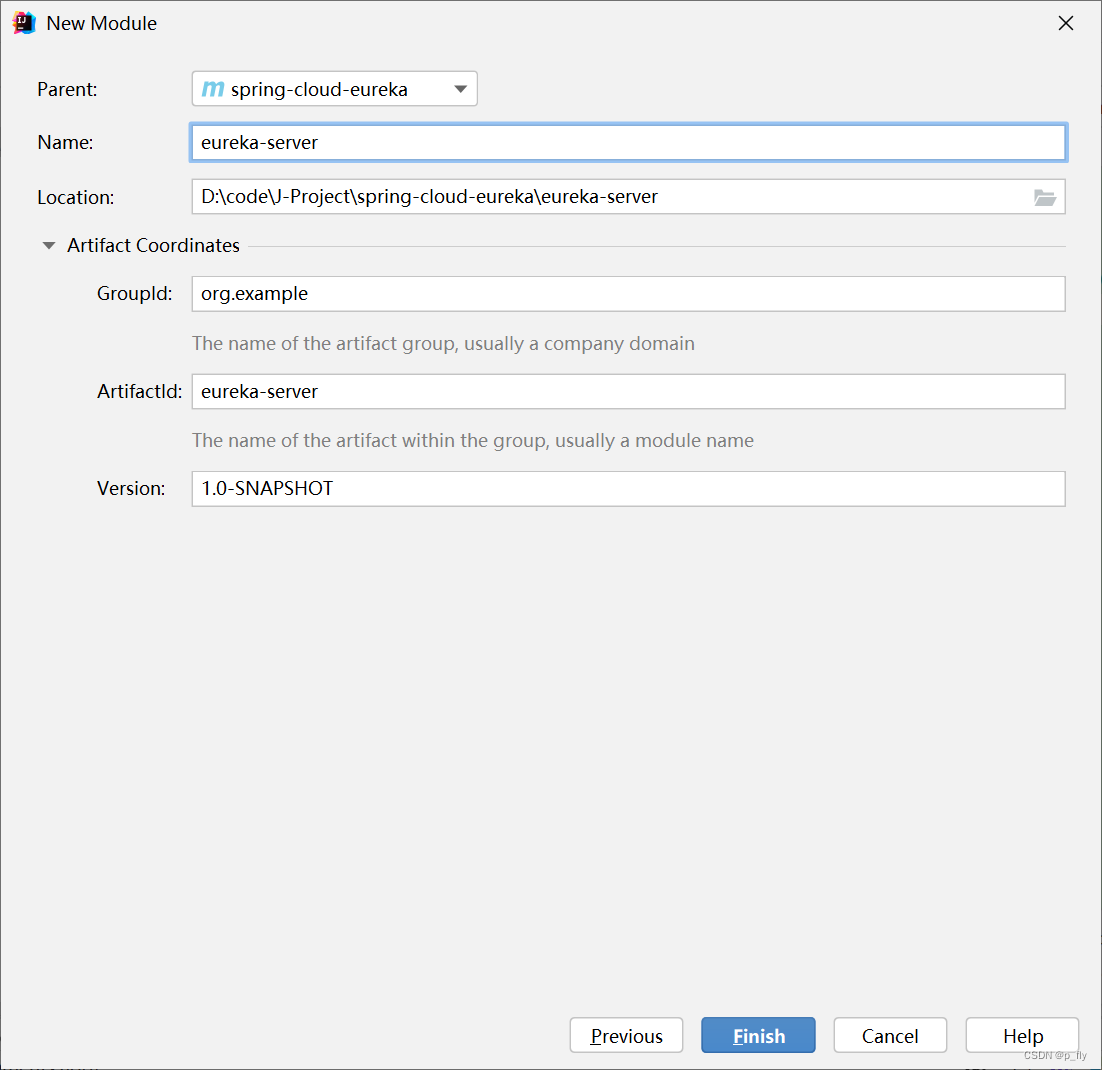
添加依赖
在刚才的eureka-server模块的pom中添加依赖。
<dependency><groupId>org.springframework.cloud</groupId><artifactId>spring-cloud-starter-netflix-eureka-server</artifactId></dependency>完整的pom文件
<?xml version="1.0" encoding="UTF-8"?>
<project xmlns="http://maven.apache.org/POM/4.0.0"xmlns:xsi="http://www.w3.org/2001/XMLSchema-instance"xsi:schemaLocation="http://maven.apache.org/POM/4.0.0 http://maven.apache.org/xsd/maven-4.0.0.xsd"><parent><artifactId>spring-cloud-eureka</artifactId><groupId>org.example</groupId><version>1.0-SNAPSHOT</version></parent><modelVersion>4.0.0</modelVersion><artifactId>eureka-server</artifactId><dependencies><dependency><groupId>org.springframework.cloud</groupId><artifactId>spring-cloud-starter-netflix-eureka-server</artifactId></dependency></dependencies><properties><maven.compiler.source>17</maven.compiler.source><maven.compiler.target>17</maven.compiler.target></properties><build><plugins><plugin><groupId>org.springframework.boot</groupId><artifactId>spring-boot-maven-plugin</artifactId></plugin></plugins></build></project>配置文件
server:port: 8360
spring:application:name: eureka-server
eureka:instance:hostname: localhostclient:fetch-registry: false # 表示是否从Eureka Server获取注册信息,默认为true.因为这是一个单点的Eureka Server,不需要同步其他的Eureka Server节点的数据,这里设置为falseregister-with-eureka: false # 表示是否将自己注册到Eureka Server,默认为true.由于当前应用就是Eureka Server,故而设置为false.service-url:# 设置Eureka Server的地址,查询服务和注册服务都需要依赖这个地址defaultZone: http://${eureka.instance.hostname}:${server.port}/eureka/
logging:pattern:console: '%d{MM-dd HH:mm:ss.SSS} %c %M %L [%thread] %m%n'
启动类
@EnableEurekaServer // 开启 Eureka Server
@SpringBootApplication
public class EurekaServerApplication {public static void main(String[] args) {SpringApplication.run(EurekaServerApplication.class, args);}
}
启动
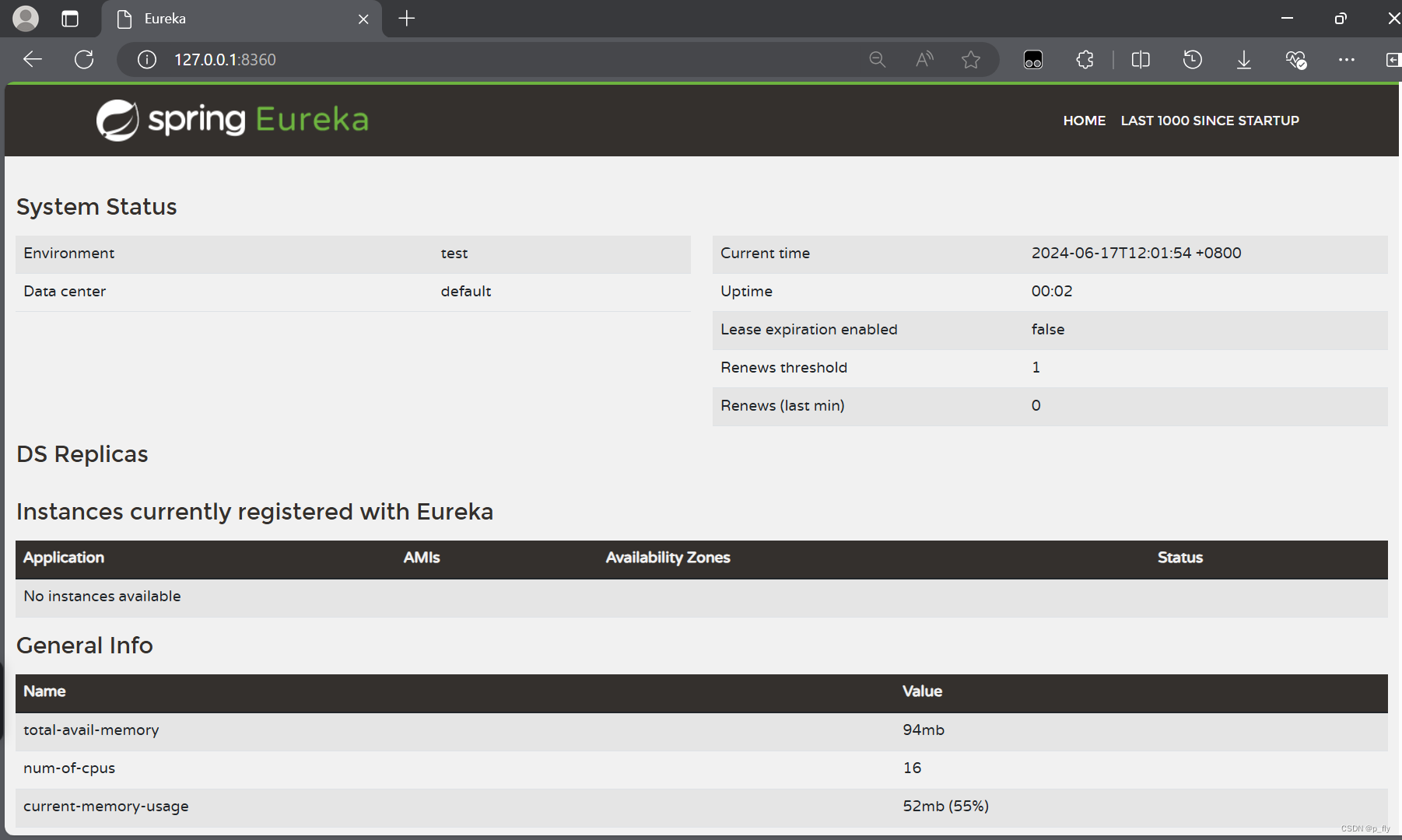
至此服务中心搭建成功。
服务注册
把product-service注册。
添加依赖
<dependency><groupId>org.springframework.cloud</groupId><artifactId>spring-cloud-starter-netflix-eureka-client</artifactId></dependency>修改配置
主要是添加了
server:port: 8350
spring:application:# 给product-service起个名字,方便eureka管理name: product-servicedatasource:url: jdbc:mysql://82.157.124.63:8220/cloud_product?characterEncoding=utf8&useSSL=falseusername: rootpassword: pxf1212driver-class-name: com.mysql.cj.jdbc.Driver# 设置 Mybatis 的 xml 保存路径
mybatis:configuration: # 配置打印 MyBatis 执行的 SQLlog-impl: org.apache.ibatis.logging.stdout.StdOutImplmap-underscore-to-camel-case: true #自动驼峰转换# 配置打印 MyBatis 执行的 SQL
logging:file:name: logs/springboot.loglogback:rollingpolicy:max-file-size: 1KBfile-name-pattern: ${LOG_FILE}.%d{yyyy-MM-dd}.%ilevel:com:example:demo: debug# Eureka Client
eureka:client:service-url:# product-service 使用这个地址 注册到 eureka-serverdefaultZone: http://127.0.0.1:8360/eureka/
启动
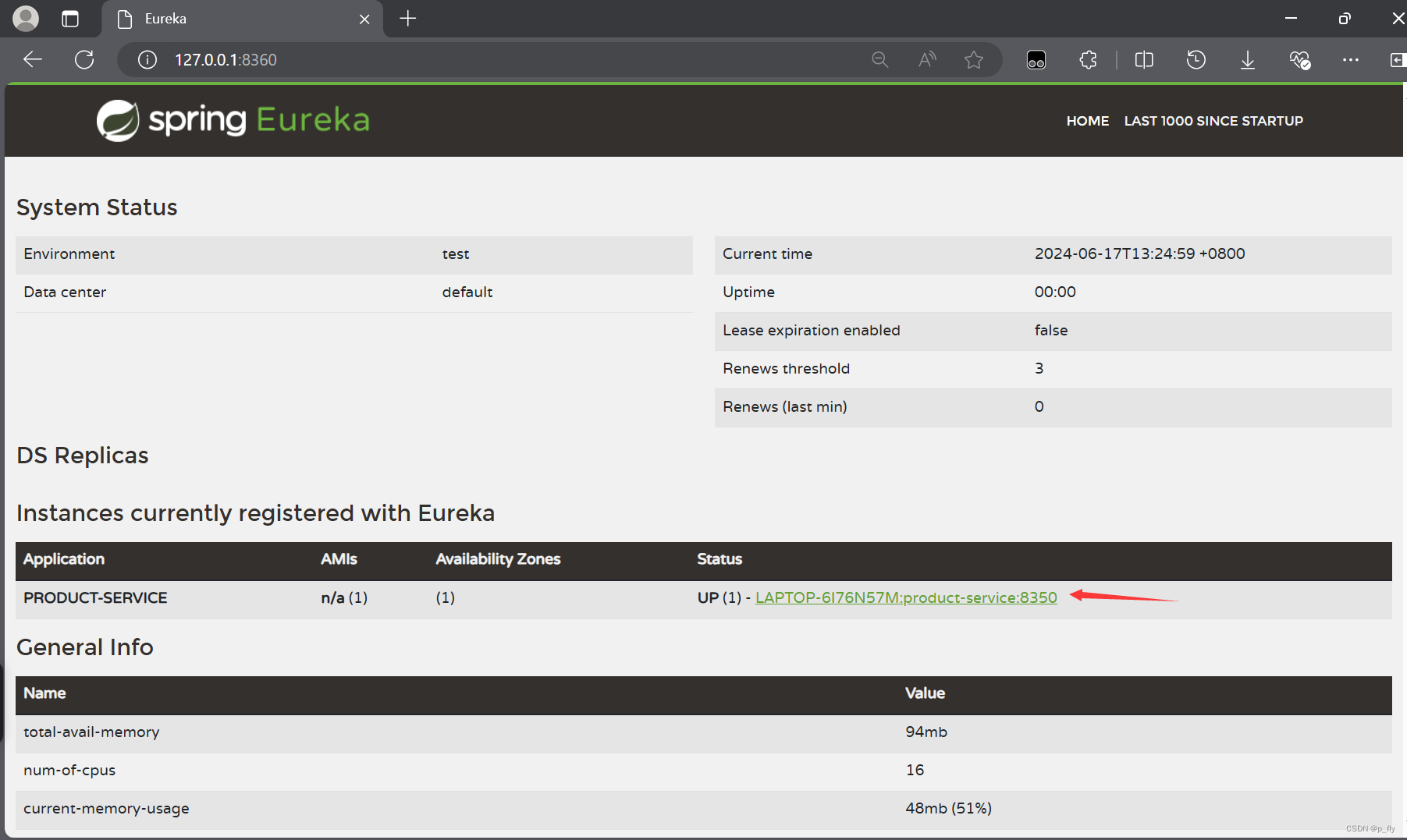
可以看到已经product-service已经注册到服务中心了。
服务发现
在order-service拉取product-service的服务信息,从而实现服务发现。
添加依赖
<dependency><groupId>org.springframework.cloud</groupId><artifactId>spring-cloud-starter-netflix-eureka-client</artifactId></dependency>修改配置
server:port: 8340
spring:application:name: order-servicedatasource:url: jdbc:mysql://82.157.124.63:8220/cloud_order?characterEncoding=utf8&useSSL=falseusername: rootpassword: pxf1212driver-class-name: com.mysql.cj.jdbc.Driver# 设置 Mybatis 的 xml 保存路径
mybatis:configuration: # 配置打印 MyBatis 执行的 SQLlog-impl: org.apache.ibatis.logging.stdout.StdOutImplmap-underscore-to-camel-case: true #自动驼峰转换# 配置打印 MyBatis 执行的 SQL
logging:file:name: logs/springboot.loglogback:rollingpolicy:max-file-size: 1KBfile-name-pattern: ${LOG_FILE}.%d{yyyy-MM-dd}.%ilevel:com:example:demo: debug
eureka:client:service-url:defaultZone: http://127.0.0.1:8360/eureka
远程调用
从eureka-server中获取product-service中的服务列表,并选择其中的一个调用。
package com.demo.order.service;import com.demo.order.mapper.OrderMapper;
import com.demo.order.model.OrderInfo;
import com.demo.order.model.ProductInfo;
import lombok.extern.slf4j.Slf4j;
import org.springframework.beans.factory.annotation.Autowired;
import org.springframework.cloud.client.ServiceInstance;
import org.springframework.cloud.client.discovery.DiscoveryClient;
import org.springframework.cloud.netflix.eureka.EurekaServiceInstance;
import org.springframework.stereotype.Service;
import org.springframework.web.client.RestTemplate;import java.util.List;@Slf4j
@Service
public class OrderService {@Autowiredprivate OrderMapper orderMapper;@Autowiredprivate RestTemplate restTemplate;@Autowiredprivate DiscoveryClient discoveryClient;public OrderInfo selectOrderById(Integer orderId) {OrderInfo orderInfo = orderMapper.selectOrderById(orderId);List<ServiceInstance> instances = discoveryClient.getInstances("product-service");EurekaServiceInstance instance = (EurekaServiceInstance) instances.get(0);log.info(instance.getInstanceId());String url = instance.getUri() + "/product/" + orderInfo.getProductId();ProductInfo productInfo = restTemplate.getForObject(url, ProductInfo.class);orderInfo.setProductInfo(productInfo);return orderInfo;}
}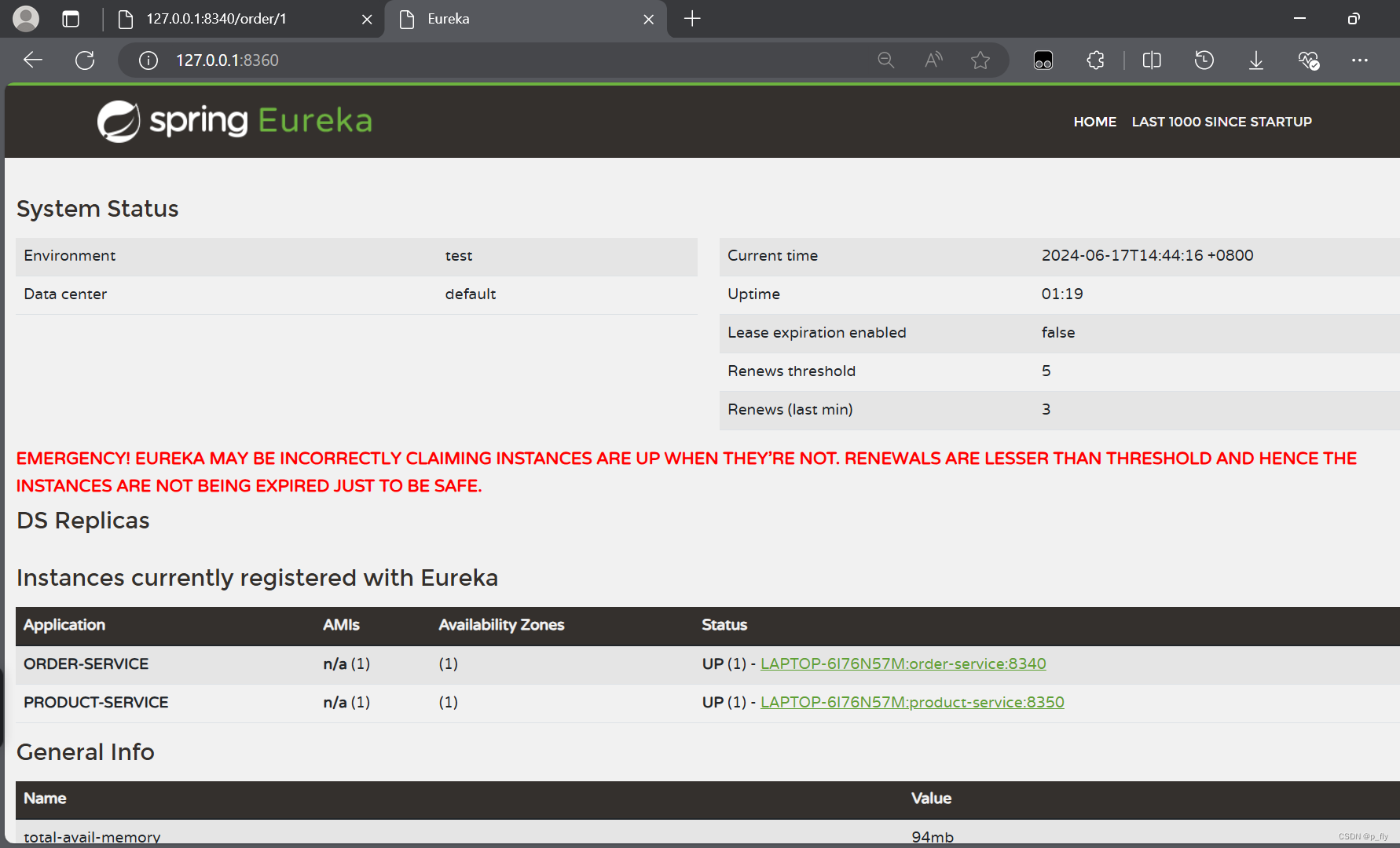
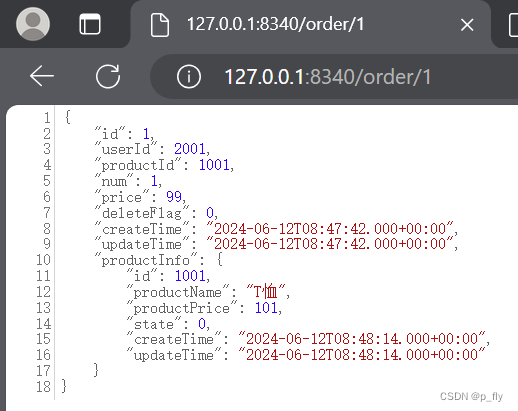
这篇关于【SpringCloud】Eureka的简单使用的文章就介绍到这儿,希望我们推荐的文章对编程师们有所帮助!









